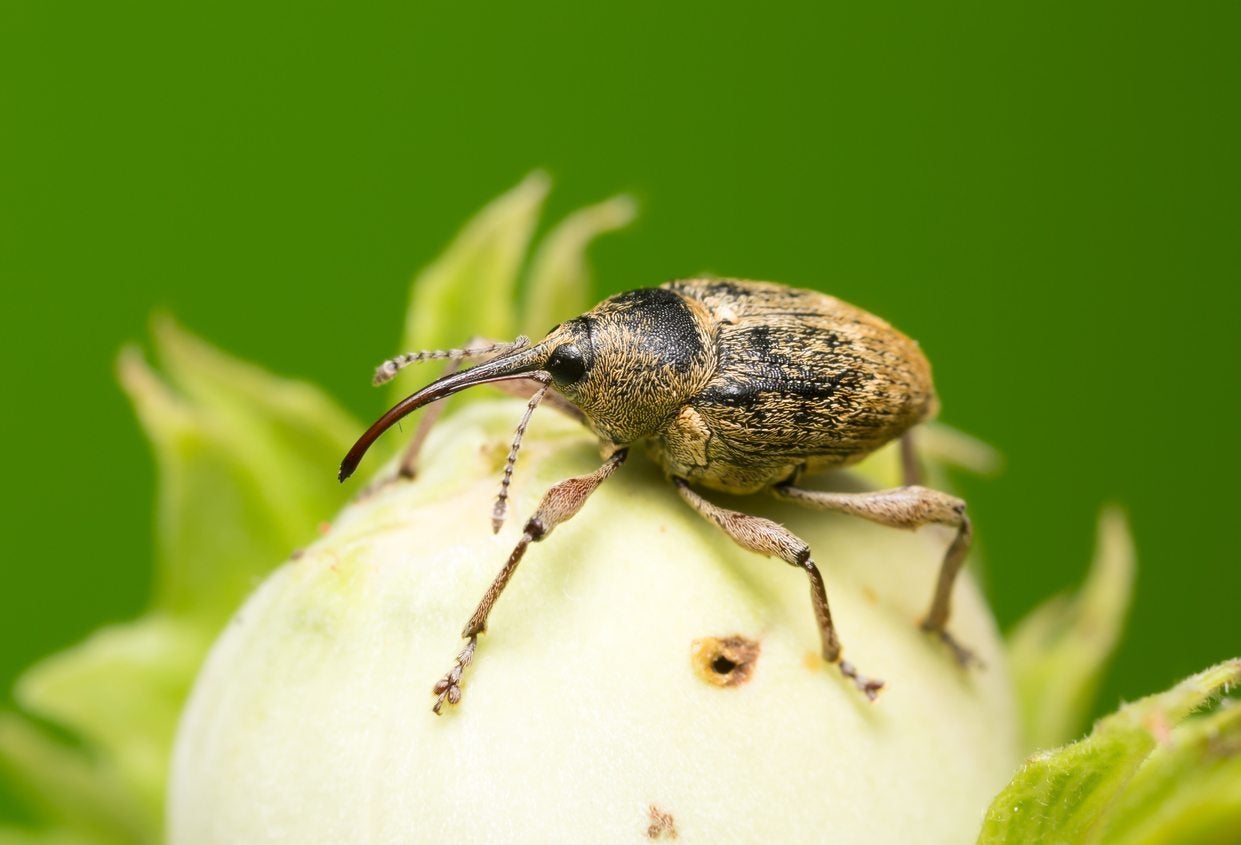What Are Nut Tree Pests: Learn About Bugs That Affect Nut Trees


When you plant a walnut or a pecan, you’re planting more than a tree. You’re planting a food factory that has the potential to shade your home, produce abundantly, and outlive you. Nut trees are amazing plants, but along with their enormous size, they’re a large responsibility. They’re often the target of insect pests, so you should familiarize yourself with what common nut tree pests are problems. Bugs that affect nut trees are significantly easier to treat when the problem is caught early before the infestation is serious, so a keen eye is a necessity.
What are Nut Tree Pests?
It may seem like nut trees are impervious to pest insects, but the truth is that they can succumb just like any other plant. Their relatively large size in comparison to many other plants only means that it takes a larger insect load before you notice significant nut tree pest symptoms. Regular inspection of your nut trees can keep them pest free, which is why we’ve compiled a list of the most common nut tree pests and how to treat pests on nut trees below: Aphids. These soft-bodied insects are present on almost any sort of plant you can think of and can be particularly devastating on producers like nut trees. Their sticky honeydew gives sooty mildew plenty of opportunity to obscure and block photosynthesizing leaves, reducing overall vigor and the aphids’ own feeding can cause blooms and buds to emerge disfigured, making it increasingly difficult for biological processes to continue normally. Getting rid of aphids in nut trees requires a two-pronged approach since they’re almost always being farmed by ants. You can treat the tree with one of many insecticides, or simply spray the leaves with a hard blast of water from a garden hose daily, while also maintaining a sticky barrier at the bottom of the tree and baiting the ants to eliminate the colony. Scale. Many species of scale attack nut trees, but unless your tree is suffering significantly, don’t panic if you see scale. First, verify that the new bump or fuzzy spot is actually a scale insect by gently separating the protective covering from the tree with a thin blade. If a soft-bodied insect is inside, plan to spray your tree with a three percent concentrate of superior oil during the dormant season. Reducing pesticide applications can actually help reduce scale numbers by encouraging the number of beneficial insects that will readily feed on these insects. Mites. Mites can cause various types of damage to nut trees. The most obvious is bronze-colored stippling to leaves and fine webbing, in the case of spider mites. If the situation is very localized, you can wait and watch to see if natural predators will take care of the situation, but if there’s widespread damage, you’ll need to intervene. You can apply superior oil during the dormant season at a three percent concentration or at one percent during late spring or summer. Applications of abamectin can also be applied but be sure to observe a 21 day pre-harvest interval. Codling moth. Since these pest caterpillars crawl into nuts early in their lifecycle, it’s vital that you monitor them throughout the season. They overwinter behind bark or in the soil in cocoons, then emerge as adults to lay eggs on nearby fruit and nut trees. Once a population of codling moths has started breeding on your nut trees, it’s very difficult to get rid of them. Choosing late-leafing nut trees can help avoid them, but if your trees are already in place, removing any nuts that appear to have been tunneled into or have frass coming out of the end immediately can slow the spread. Bagging nuts four weeks after bloom provides excellent control but is also highly intensive work. Utilizing sticky traps can help thin adult codling moth populations, as well as inform your timing of safer insecticides like Bacillus thuringiensis. Other possible pests of nut trees include weevils, though these insects are rarely a problem unless found in significant numbers.
Sign up for the Gardening Know How newsletter today and receive a free copy of our e-book "How to Grow Delicious Tomatoes".

Kristi Waterworth was a regular contributor to Gardening Know How for many years, answering countless queries on plant pests and diseases.